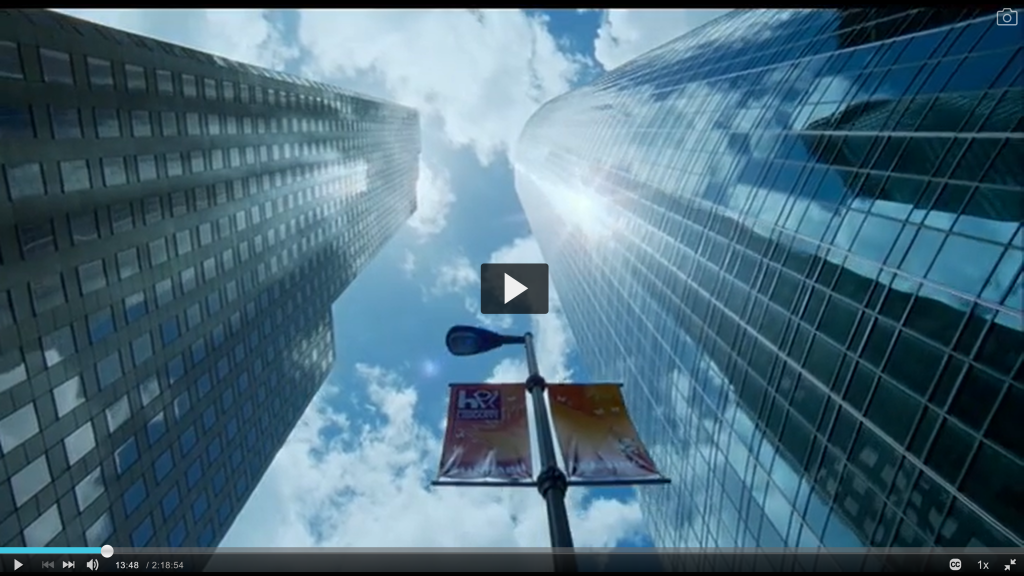Film critic Wesley Morris cites The Tree of Life‘s interest in “planetarium stuff” as an example of its distance from reality. Stories of early spacetimes could not be passed down by humans. Technology creates an opportunity for researchers to learn about these events and for the public to view realistic depictions of them. Yet before the film enters its especially technological prehistory, it presents technology as a threat.

This shot of twin skyscrapers evokes claustrophobia. The ‘scrapers seem to block out the sun, God’s apparent home. Their protuberance into the screen suggests that, as a viewer engages with the movie, they are in danger of falling into the sky. In addition to the normal fear of falling, this suggestion’s illogic may disturb.

In this shot, the camera is positioned against a wall which angles inward, minimizing the camera’s freedom of movement. Passerby block off the light, open, high-ceiled area on the left. The reflective glass gives the guy creepily standing in front of the camera a creepy double. The aqua, black barred structure is mirrored as well. These clones suggest the decreased necessity of any individual, as does the bright and perky empty chair. These shots construct, in conjunction with many others, a place where technology is threatening and can ultimately function without humankind.
When the film explores the “planetarium stuff,” though, it shows an appreciation for technology. The CGI dinosaurs hold a beauty that a cast of humans doing dinosaur impressions would lack. And if Malick wanted to avoid looking silly while using minimal technology, he could certainly have certainly collected footage of alligators, or shot the night sky from his backyard. In contrast to the modern building scenes, these sequences express the beauty and efficacy of technology.

